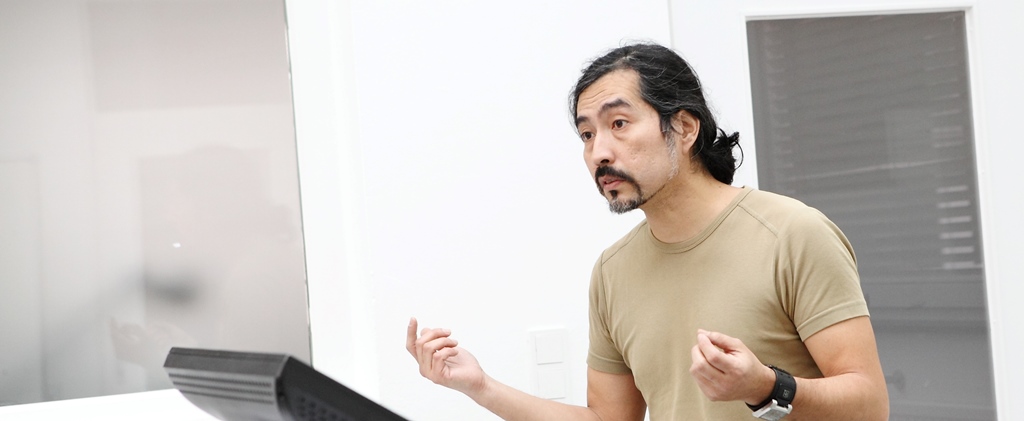Furtive, Quiet and Loud
Art and communication practices to deconstruct social codes in the realm of media activism
Mediation and reception
A few of my Austrian friends stood beside this installation for several hours per week and talked with the passersby. Sometimes I was there, too, however I did not want to show my face, because I am the man depicted in the pictures with the baby, and the people probably would not say what they really thought if they realized that I was the author of the project.
The project was given positive feedback in the media, but on the websites of the tabloid Heute and the newspaper Der Standard, the negative opinions where overwhelming. However, the most negative reactions were expressed by destroying a poster stand and writing obscene statements on the posters, such as “Where are the tits?” (see figure 2). The negative comments illustrate the conservative approach towards the role of men and women in Austria, which is still defended by many people in our allegedly enlightened post-industrial society. Moreover, it reflects the fact that we are currently experiencing a dangerous rebirth of movements in European countries that are based on reactionary ideologies, which deny the major historical achievements of feminist (and other) social movements. The more striking examples of the rise of conservative and even reactionary ideologies are the huge protests again gay rights in France and the new, restrictive abortion law in Spain in 2013.
The reactions to this project as well as to the project Österreichische Nachrichten has led me to inquire into the importance of emotion in public spaces, which I will address in my concluding remarks.
Concluding remarks
We learn from our daily experience that what happens in the realm of politics is not usually dominated by rationality. The philosopher Spinoza has already argued that reason alone is incapable of motivating human action; affect and passion are required. Politics and emotion are not counterparts, on the contrary: Emotions have the great potential to effect the public sphere, when people share their experiences and seek to achieve a common political goal. It is questionable to think that emotion always distorts the supposed aseptic rationality of politics (moreover, when we analyze human history, this asepsis does not exist). Emotions are another form of knowledge and it is necessary to embrace them as a constitutive and necessary part of any politics, including cultural politics. As a result, an important question for artists dealing with social and political issues is: How we can produce an artistic work that strongly appeals to emotions, without losing the ethical component? We should not forget that fascists and right-wing populists use the same strategy as they manipulate people with a strongly emotional visual vocabulary.
As we know, sensationalist tabloids and market strategists use a visual language that appeals to emotions in order to sell and practice (malicious) politics. They do not seek to promote analytical thinking, but rather, affective reactions: fear of foreigners in the case of tabloids, fear of losing economic status, in the case of modern neoliberal campaigns.
The aim of these projects was to adopt a similar strategy by generating an initial emotion (fear or surprise) in order to hook the random reader or pedestrian. Nevertheless, the intention was not to leave people in a state of panic or surprise, but to allow them to uncover the deception. My hypothesis is that humor, parody, and reductio ab absurdum are capable of initiating a process allowing people to achieve the necessary distance for reaching a meta-level of reflection that will ultimately help them move away from the emotional level, in order to begin thinking about the mechanisms of social manipulation.
Another great advantage of using the same visual language as mass media and publicity was that people approached the art works voluntarily, without rejecting them as “leftist ideology” or moralizing.
Finally, these interventions did not seek to produce “just” an artistic action in public space: They did not aim to attack the elitist art system or the white cube, enhance a place, attract tourism, decorate a place, or make political propaganda. Instead, they aimed to open up other forms of thinking about social issues for casual passersby on the streets. Their (potential) value is not situated in the works themselves, but in the interaction they establish with the public, and in the recipients’ different interpretations of them. They are relational but not in the sense of aiming to “fix” social problems by establishing a harmonious and pleasant dialogue with different people or looking for a peaceful multicultural connivance. The goal was to address the contradictions of our contemporary society plagued by uncertainty and the fear of “the Other” and give visibility to these shared feelings in the public sphere.
Hansel Sato ( 2014): Furtive, Quiet and Loud. Art and communication practices to deconstruct social codes in the realm of media activism. In: p/art/icipate – Kultur aktiv gestalten # 04 , https://www.p-art-icipate.net/furtive-quiet-and-loud/



 Artikel drucken
Artikel drucken